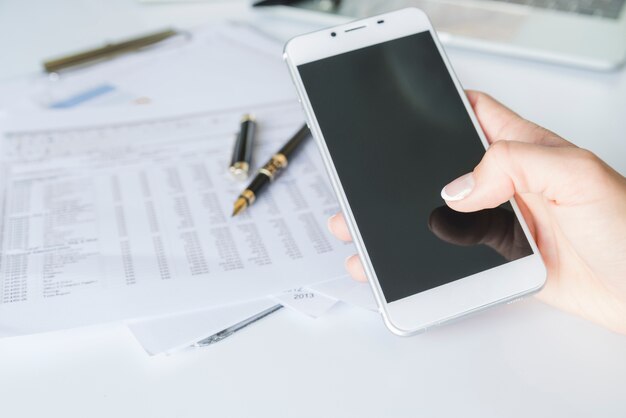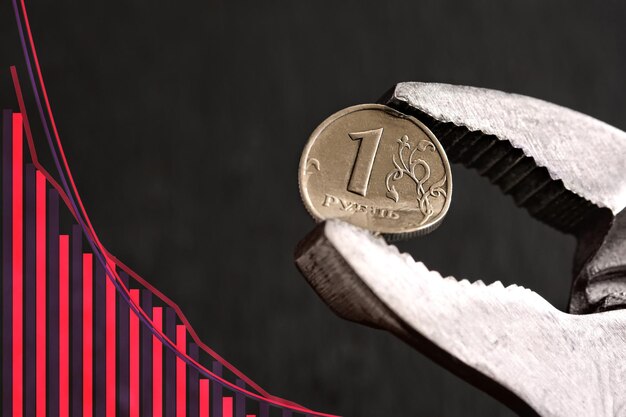Understanding Fiat vs. Crypto: Exploring the Differences Between Currency and Cryptocurrency
In today’s interconnected world, economic transactions have evolved beyond the boundaries of physical currencies we once considered the bedrock of financial systems. With the emergence of innovative technologies, the notion of value has taken a new shape, challenging the preconceived notions of traditional money.
Unveiling a realm of possibilities, this article seeks to shed light on the dichotomy between digital and conventional currencies, unravelling their inherent disparities and the inherent benefits that they bring. By delving into the core mechanisms, we can delve into a deeper understanding of their fundamental characteristics and the advantages they hold.
As we embark on this enlightening journey, we will explore the essence of digital currencies and their underlying technology, and the role they play in revolutionizing the global financial landscape. Conversely, we will also examine the age-old fiat currencies that have stood the test of time, tracing their roots and the societal trust that has been bestowed upon them for generations.
Through this exploration, we will gain insights into the immense potential of digital currencies, with their underlying blockchain technology powering a decentralized and transparent financial ecosystem. Simultaneously, we will recognize the enduring appeal of fiat currencies, symbolizing economic stability and acting as a medium of exchange in traditional marketplaces.
The Basics of Fiat Currency
Unveiling the fundamentals of traditional currency
Introduction
Have you ever wondered how the money in your wallet or bank account actually holds value? In the world of economics, traditional currency, also known as fiat currency, plays a crucial role in facilitating everyday transactions and driving economic growth. Understanding the basics of fiat currency is essential for grasping the nuances of financial systems and the broader concept of money itself.
What is Fiat Currency?
Fiat currency refers to a form of currency that is not backed by a physical commodity, such as gold or silver, but rather derives its value from government regulation and trust in the issuing authority. Unlike cryptocurrencies, which rely on decentralized technology and complex algorithms, fiat currency is regulated and controlled by central banks and governments.
Unique Characteristics of Fiat Currency
One defining characteristic of fiat currency is its widespread acceptance as a medium of exchange within a specific jurisdiction. Fiat currencies are universally recognized and used for various transactions, including buying goods and services, paying taxes, and settling debts. Additionally, they serve as a unit of account, providing a standardized measurement of value for different goods and assets.
Another unique aspect of fiat currency is its fungibility, meaning that each unit of currency is interchangeable and equivalent to others of the same denomination. This interchangeability facilitates seamless transactions and simplifies financial calculations.
Government Control and Monetary Policy
A fundamental feature of fiat currency is the centralized control exerted by governments and central banks over its supply and circulation. Through monetary policy, governments can manipulate factors such as interest rates, money supply, and inflation to stabilize economies and respond to changing economic conditions.
By adjusting interest rates and implementing measures like quantitative easing, central banks aim to regulate inflation levels, promote economic growth, and maintain stability within financial systems. The ability to govern and control the value of fiat currency is a significant advantage over decentralized cryptocurrencies, allowing governments to address economic crises and promote financial stability.
In conclusion, understanding the basics of fiat currency provides a foundation for comprehending the broader concepts of money and financial systems. Its widespread acceptance, fungibility, and government control are key factors that enable fiat currency to function as a medium of exchange and unit of account within economies around the world.
What is Cryptocurrency?
In the realm of digital transactions, a revolutionary concept has emerged, reshaping the way we perceive and utilize money. Cryptocurrency, a form of virtual currency, has gained immense popularity over the years. Unlike traditional fiat money governed by central authorities or governments, cryptocurrency functions on decentralized systems based on advanced encryption techniques.
A New Era of Financial Independence
Cryptocurrency represents a paradigm shift, offering individuals unprecedented financial autonomy and freedom. It provides an alternative to conventional financial systems by eliminating the need for intermediaries such as banks or governments. Instead, transactions are recorded on a secure, transparent, and immutable decentralized ledger known as a blockchain.
The Technology Behind Cryptocurrencies
At the heart of cryptocurrencies lies the technology known as blockchain. This distributed ledger system ensures the immutability and security of transactions. Each transaction is verified and added to a block by network participants known as miners. These miners solve complex mathematical puzzles to validate the integrity of the transactions within the network.
- Transparency: Cryptocurrency transactions can be audited and traced on the public blockchain, promoting transparency and accountability.
- Security: The cryptographic techniques employed in cryptocurrencies ensure the security and integrity of transactions, making it extremely difficult to manipulate or counterfeit.
- Simplicity: Cryptocurrency transactions can be conducted with ease, enabling peer-to-peer transfers without the need for intermediaries.
Furthermore, the limited supply of many cryptocurrencies, such as Bitcoin, adds to their appeal. Their scarcity and decentralized nature have contributed to their rising value and widespread adoption.
In conclusion, cryptocurrency represents a groundbreaking evolution in the world of finance. With its decentralized nature, transparency, and enhanced security, it offers individuals greater control over their financial transactions, driving the pursuit of financial autonomy and independence.
Advantages of Digital Currency
When it comes to modern forms of currency, there are several advantages to using digital currency over traditional fiat money.
- 1. Security: Digital currency offers enhanced security measures compared to traditional forms of money. With cryptographic protocols, transactions made using digital currency are encrypted, making them highly secure and resistant to fraud.
- 2. Decentralization: Unlike fiat money that is controlled by central banks, digital currency operates on decentralized networks such as blockchain. This decentralization ensures that no single entity has complete control over the currency, making it more resistant to manipulation and inflation.
- 3. Transparency: Digital currency transactions are recorded on a public ledger, providing transparency for all participants. This transparency reduces the risk of fraud and promotes trust in the system.
- 4. Accessibility: Digital currency can be accessed by anyone with an internet connection, regardless of their geographic location. This accessibility allows for greater financial inclusion, especially for individuals who do not have access to traditional banking systems.
- 5. Speed and Efficiency: Transactions made with digital currency can be processed quickly, eliminating the need for intermediaries and reducing transaction fees. This speed and efficiency make digital currency a convenient option for both individuals and businesses.
- 6. Global Reach: Digital currency is not bound by borders, making it an ideal option for international transactions. It eliminates the need for currency conversion and provides a seamless and efficient way to transfer funds across different countries.
These advantages make digital currency an attractive alternative to traditional fiat money, offering unique benefits in terms of security, decentralization, transparency, accessibility, speed, efficiency, and global reach.
Challenges of Fiat Money
Exploring the complexities inherent in traditional currency systems brings to light a range of challenges that they face. These challenges, which arise due to various factors, have implications for economies, governments, and individuals alike.
One of the key hurdles faced by fiat money is the inherent risk of inflation. The value of fiat currency is subject to fluctuations depending on a multitude of factors, including economic conditions, government policies, and global trends. This volatility can lead to a loss of purchasing power for individuals and create economic instability on a larger scale.
Another challenge lies in the centralized nature of fiat money systems. Central banks and governments hold significant control over the creation, distribution, and regulation of traditional currency. This concentration of power can potentially lead to issues such as manipulation, corruption, and unequal distribution of wealth. Additionally, the dependence on intermediaries, such as banks, for transactions can result in high fees, delays, and limited accessibility for certain segments of the population.
Furthermore, the reliance on physical cash can pose security risks and logistical challenges. The need for secure storage, transportation, and verification of banknotes and coins adds costs and complexity to the management of fiat currency. Moreover, the risk of theft, counterfeiting, and loss of physical currency can have detrimental effects on individuals, businesses, and society as a whole.
In the face of technological advancements and global trends, fiat currency systems also face the challenge of adapting to a digital world. While digital banking and payment solutions have emerged, the underlying infrastructure and regulations for seamless integration still require constant evolution. The complexity and bureaucracy associated with traditional financial systems can hinder their ability to keep pace with the rapidly changing demands of the digital age.
Understanding and addressing these challenges is vital for governments, financial institutions, and individuals to ensure the stability, fairness, and efficiency of currency systems. By recognizing the limitations of fiat money, potential solutions and opportunities for innovation can be explored, paving the way for a more inclusive and robust financial future.
The Future of Money: Is Crypto the Way Forward?
As we look towards the future, it is important to consider the trajectory of financial systems and the role that cryptocurrencies may play. With the rise of digital currencies and the growing adoption of blockchain technology, many are questioning whether crypto is the path forward in the world of finance.
A Disruptive Force
Cryptocurrencies have emerged as a disruptive force in the financial landscape, challenging traditional notions of currency and revolutionizing the way we transact and store value. Unlike fiat money, which is issued and regulated by central banks, cryptocurrencies operate on decentralized networks, offering a level of transparency and security previously unseen in traditional financial systems.
Advocates argue that crypto has the potential to democratize financial services, providing access to underserved populations and bypassing the limitations and barriers associated with traditional banking systems. With cryptocurrencies, individuals can have full control over their funds, without the need for intermediaries.
A More Efficient System
One of the key advantages touted by supporters of cryptocurrencies is their potential to streamline transactions and reduce costs. Traditional banking systems often involve lengthy processes, substantial fees, and the need for intermediaries such as banks and payment processors. Cryptocurrencies, on the other hand, enable peer-to-peer transactions that are faster, cheaper, and more secure.
| Traditional Money | Cryptocurrencies |
|---|---|
| High transaction fees | Low transaction fees |
| Long processing times | Near-instant transactions |
| Dependence on intermediaries | Direct peer-to-peer transactions |
Furthermore, cryptocurrencies have the potential to break down barriers in cross-border transactions, eliminating the need for currency conversions and reducing the associated costs and complexities. This can enable more efficient global commerce and facilitate financial inclusion on a global scale.
However, it is important to acknowledge the challenges and risks associated with cryptocurrencies, including volatility, regulatory uncertainty, and the potential for illicit activities. As the future unfolds, it will be crucial to strike a balance between innovation and regulation, harnessing the benefits of crypto while mitigating risks.
Ultimately, whether crypto is the way forward in the future of money remains to be seen. However, it is clear that cryptocurrencies have emerged as a disruptive force with the potential to reshape the financial landscape and offer new opportunities for individuals and businesses alike.
Questions and answers: Crypto vs fiat money
What is the difference between crypto money and fiat money?
Crypto money is a digital currency that relies on cryptography for security and operates independently of any central authority. On the other hand, fiat money is a government-issued currency that is not backed by a physical commodity like gold and is determined as legal tender by the government.
Can cryptocurrencies replace fiat money?
While cryptocurrencies like Bitcoin have gained popularity, it is unlikely that they will completely replace fiat money. Fiat money is widely accepted and regulated by governments, making it more stable and easily accessible for everyday transactions. Cryptocurrencies, on the other hand, are still relatively volatile and face challenges in terms of scalability and acceptance.
Are there any benefits to using cryptocurrencies over fiat money?
Yes, there are several benefits to using cryptocurrencies. They offer faster and cheaper cross-border transactions compared to traditional banking systems. Additionally, cryptocurrencies provide greater privacy and security as they utilize decentralized networks and cryptographic algorithms. However, it’s important to note that the volatility of cryptocurrencies can also be a disadvantage.
Are cryptocurrencies more secure than fiat money?
Cryptocurrencies offer a different level of security compared to fiat money. While crypto transactions are secured using cryptographic algorithms and distributed ledger technology, fiat money relies on physical security measures and trust in financial institutions. The decentralized nature of cryptocurrencies makes them less vulnerable to hacking and fraud, but individual account security still depends on the user’s personal practices.
How can one convert fiat money into cryptocurrencies?
To convert fiat money into cryptocurrencies, one can use cryptocurrency exchanges or peer-to-peer platforms. These platforms allow individuals to buy cryptocurrencies using traditional payment methods such as bank transfers or credit cards. The process usually involves creating an account, verifying identity, and selecting the desired cryptocurrency to purchase.
What is the difference between crypto and fiat money?
Crypto money is a digital or virtual form of currency that uses cryptography for secure financial transactions, while fiat money is traditional currency issued by a government and is not backed by a physical commodity.
What is the relationship between cryptocurrency and fiat currency?
Cryptocurrency and fiat currency are both forms of money, but they operate on different platforms and have distinct characteristics.
How does cryptocurrency serve as a store of value compared to fiat currency?
Cryptocurrency serves as a store of value by leveraging blockchain technology, decentralization, and scarcity to maintain its worth over time, while fiat currency relies on government backing and economic stability.
What role does fiat currency play in the crypto market?
Fiat currency serves as a medium of exchange for purchasing cryptocurrencies on various exchanges and platforms.
Can cryptocurrency be considered a digital asset?
Yes, cryptocurrency is classified as a digital asset because it exists in digital form and holds value similar to traditional assets like stocks or bonds.
How do digital assets differ from physical assets?
Digital assets, including cryptocurrencies, exist solely in digital form and are stored electronically, whereas physical assets have a tangible presence and can be held physically.
What are some examples of digital assets besides cryptocurrency?
Other examples of digital assets include digital currencies issued by central banks, digital representations of real-world assets (such as real estate or art), and digital collectibles.
How does cryptocurrency provide a store of value in comparison to traditional assets?
Cryptocurrency offers a store of value through features like decentralization, limited supply, and cryptographic security, which can hedge against inflation and provide diversification in investment portfolios.
Why is cryptocurrency often seen as a hedge against inflation?
Cryptocurrency’s fixed supply and decentralized nature make it resistant to inflationary pressures that may affect fiat currencies, thereby preserving its value over time.
How does the concept of scarcity apply to cryptocurrency as a store of value?
Cryptocurrencies like Bitcoin are designed with a limited supply, creating scarcity similar to precious metals like gold, which enhances their store of value proposition.
In what ways do individuals and institutions use cryptocurrency as a store of value?
Individuals and institutions use cryptocurrency as a store of value for long-term investment, hedging against economic uncertainty, and diversifying their asset portfolios to mitigate risks associated with traditional financial markets.
What distinguishes fiat currency from cryptocurrency?
Fiat currency is government-issued and regulated, whereas cryptocurrency operates on decentralized blockchain technology without government control.
How do cryptocurrency and fiat currency differ in terms of their nature?
Cryptocurrency is digital and decentralized, while fiat currency exists in physical and digital forms and is centrally controlled by governments.
What role does fiat currency play in the cryptocurrency market?
Fiat currency serves as a primary medium of exchange for trading cryptocurrencies on various platforms and exchanges.
How does the value of cryptocurrencies compare to that of fiat currencies in currency markets?
Cryptocurrencies, such as Bitcoin and Ethereum, often experience higher volatility compared to traditional fiat currencies like the US dollar due to their relatively smaller market size and speculative nature.
What are some examples of fiat currencies commonly used alongside cryptocurrencies?
Fiat currencies include the US dollar, euro, Japanese yen, and other government-issued currencies used for daily transactions and international trade.
How does cryptocurrency differ from fiat currency in terms of regulation?
Cryptocurrencies are not typically regulated by governments in the same way as fiat currencies, leading to varying degrees of legal recognition and oversight.
What is the significance of fiat money being backed by a government?
Fiat money derives its value from the trust and confidence placed in the issuing government, which provides stability to its value and acceptance in economic transactions.
How does the adoption of cryptocurrencies impact traditional fiat currencies?
The rise of cryptocurrencies has led to discussions about the potential disruption of traditional financial systems, prompting governments to explore regulations and digital currency initiatives.
What are the advantages of using cryptocurrencies over fiat currencies?
Cryptocurrencies offer benefits such as faster and cheaper cross-border transactions, increased financial inclusion, and reduced reliance on intermediaries in financial transactions.
Why are cryptocurrencies often associated with illicit activities such as money laundering?
Cryptocurrencies’ pseudonymous nature and decentralized infrastructure have been exploited by some individuals for illicit purposes, although the majority of cryptocurrency transactions are legitimate.








No responses yet